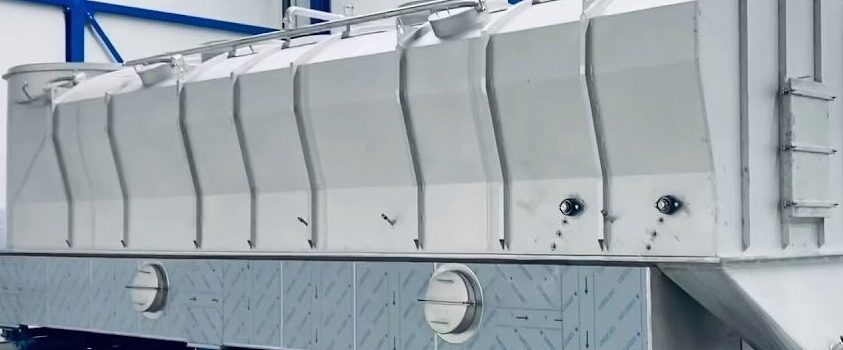The process of salt drying using fluidized bed dryers, both vibratory and static types:

Vibratory Fluidized Bed Dryer:
- In a vibratory fluidized bed dryer, the salt particles are placed on a perforated plate or mesh bed.
- The bed is vibrated using mechanical means, such as motors or vibrators, which causes the salt particles to become fluidized.
- As the bed vibrates, hot air or gas is introduced from the bottom of the bed. This hot air passes through the fluidized salt particles, effectively drying them.
- The vibration helps to keep the salt particles in constant motion, preventing them from clumping together and ensuring uniform drying.
- The dried salt is then separated from the drying air and discharged from the dryer.
Static Fluidized Bed Dryer:
- In a static fluidized bed dryer, the salt particles are placed on a stationary perforated plate or mesh bed.
- Unlike the vibratory dryer, there is no mechanical vibration applied to the bed.
- Hot air or gas is still introduced from the bottom of the bed, causing the salt particles to fluidize due to the upward flow of the air.
- The fluidized salt particles are then dried as the hot air passes through them.
- Since there is no vibration, the salt particles may have a tendency to agglomerate or stick together during the drying process. To prevent this, periodic agitation or mixing may be required.
- Once dried, the salt is separated from the drying air and discharged from the dryer.
Both types of fluidized bed dryers offer efficient and effective methods for drying salt. The choice between vibratory and static depends on factors such as the characteristics of the salt being dried, the required drying capacity, energy efficiency considerations, and the desired level of automation and control.
